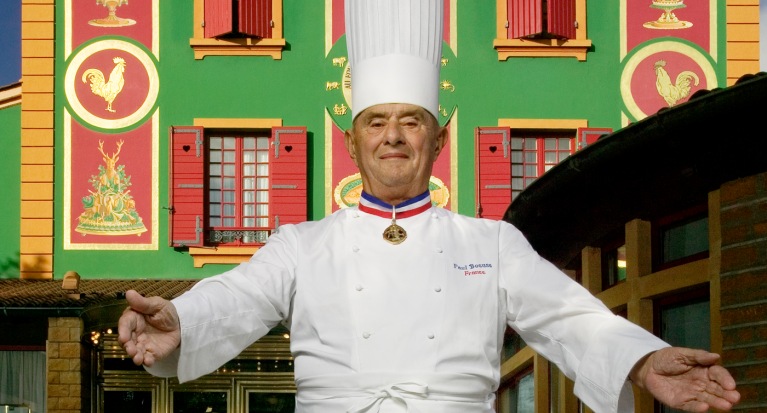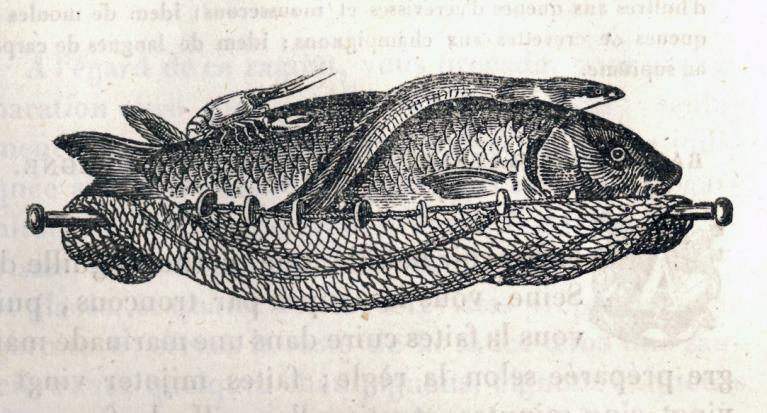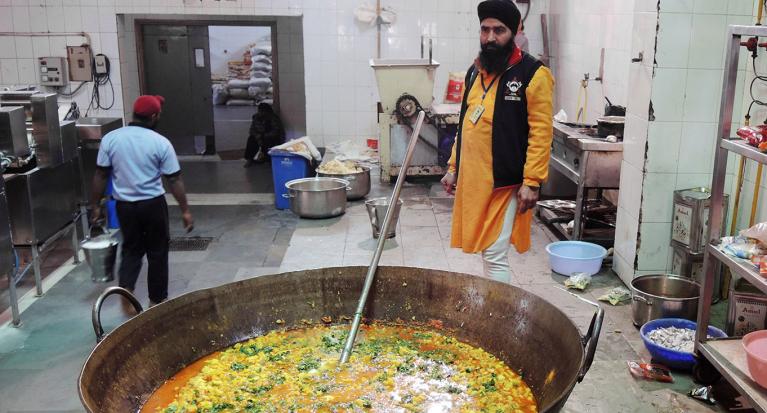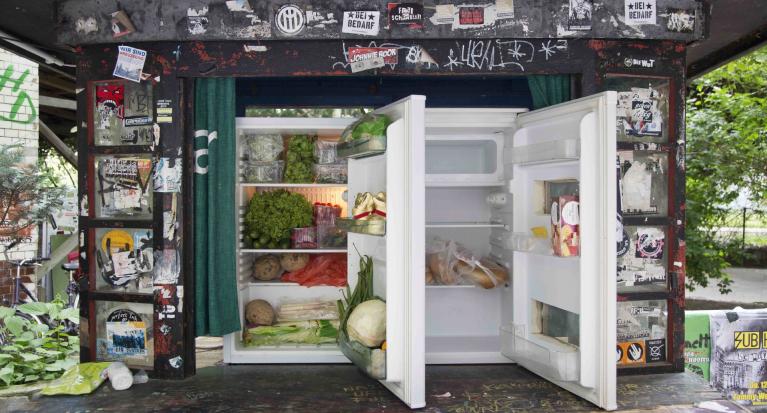“Of course, Madame”
Fresh from the galley: insights into the food culture of super-rich yacht owners.
© Giorgio Pesce/Atelier Poisson
“No! I want the big one!” Okay, let’s be discreet and just call her “Madame”. Yelling down from the railing on the top deck, she points at one of the two tunas held up by the Liparian fisherman. The people on the yacht anchored farther to the west will have to make do with the punier specimen. Smiling, she orders the yacht chef to prepare sashimi, along with a wakame salad. All the plates come back empty – except for Madame’s. She has only taken a bite of the tender fillet. “Was it not to your liking, Madame?” Her smile dissolves and she purses her lips: “It was too raw for me.”
“Of course, Madame.” On luxury yachts the owners are always right. After all, they have spent almost a million euros per metre. Yachts that are 60 metres or longer are categorised as mega yachts. The more exquisitely they are equipped, the higher their owners’ standing with their peers. When yacht owners visit each other, they note exactly the kind of aquatic toys lined up at the stern. Newer, bigger, better, classier – those who have been outdone feel anguish: the water is always bluer on the other side …
This is especially true of the cuisine. As soon as guests arrive, they are regaled with everything the world has to offer. Oysters crowned with caviar and duck livers swathed in white truffle shavings. Plates ridiculed by the size of giant lobsters, moscato parfait with acai berries strewn lavishly with gold leaf. All served with expensive champagnes and wines, as well as Evian or Perrier.
But the tableware often seems to lack style. On Madame’s pastel-coloured dinner service with its magical garden design, everything resembles mystery meat. The gold cutlery cannot improve things, even though it stands there as proudly as little soldiers, to the left and right of each plate. No matter, the guest at seat four is eating each course with a soup spoon anyway.
“As soon as you set foot on a yacht you belong to some man, not to yourself, and you die of boredom.” Coco Chanel
For many yacht owners or charter guests, the time spent on board quickly blurs into a pleasant non-reality. Which makes the regular events – breakfast, lunch, dinner – all the more important. Most people would agree with Oscar Wilde: “Let me be surrounded by luxury, I can do without the necessities!” National stereotypes are perpetuated here: Americans like things regal, Italians want the cooking of a fine Italian restaurant, the Swiss and Germans fancy nouvelle cuisine, Arabs prefer a variegated menu, Asians crave their own regional dishes, and Russians are fond of lavish meals. They all love Mediterranean and Japanese cooking, as well as fish and shellfish.
Differences are more apparent between those born into wealth and the nouveau riche. The former tend to prefer smaller portions spread across several courses, as well as classic dishes; they are tactful and easier to satisfy. More recently refined foodies emphasize pomp, originality and fusion-style dishes – mocked as “confusion” in the galley. Monsieur loves mango and is absolutely certain: “Mango goes with everything!”
But one thing never changes: the largest Kobe steak or fillet of Balik salmon is reserved for the yacht owner or chartered yacht boss. Moreover, the hierarchy at the table is as immutable as the Faraglioni rock off Capri. Monsieur sits at the head, Madame to his right, and the importance of the guest diminishes as one goes down the table. Monsieur selects the wines and determines when the feast begins. One Italian fashion designer even goes so far as to punish unpunctual guests. If you come late, you don’t get anything to eat. Yet on a ship belonging to a young couple from Kazakhstan, the exception proves the rule: they eat whenever they’re hungry and thus often separately – allegedly their inner clocks tick differently.
Yacht chefs often have to guess what their guests might want next and are responsible for guaranteeing that everything is always available. If a luxury item is out of stock and cannot be purchased in the area, it has to be flown in – whatever the cost. If the ship is anchored far out at sea, yacht chefs have to be inventive – no matter the “crimes” they might have to commit to get an ingredient. The ship is cruising along slowly between Panarea and Sardinia, 100 miles from the next shore, when Madame suddenly craves sea bass. But there is only cod and halibut in the freezer. Her praise after the meal reveals that she didn’t notice the difference.
Trying to procure certain items in distant lands can quickly turn into an adventure – particularly on isolated islands where there are no shops and the inhabitants are self-sufficient. Then yacht chefs have to coax returning fishermen to sell them some of their haul. Or they have to wheedle rocket salad and basil from an old lady in whose front garden they have discovered them growing. How do you explain to a butcher that you want lamb cutlets, veal fillets or chicken livers when the meat is stored out of sight in a steel fridge and you can’t speak the country’s language? This is why cooks often make fools of themselves, emitting animal sounds such as “baa baa” or “cluck cluck”. And all the while, they secretly dream of Viareggio, Monaco or St. Tropez, where exclusive suppliers deliver the rarest luxury goods directly to the ship.
Madame is also more content at such locations. Except for that one time at breakfast on the Côte-d’Azur. Usually when they are there, the yacht chef gets up early to fetch her a fresh pain au chocolat. In France, Madame allows herself half every morning. But on that day, she took only one bite before pursing her lips:
– Where did you get this from?
– From the baker, as always, Madame.
–Which baker?
–Boulangerie Stoliarski in Golfe Juan.
–It’s not from Italy?
–What? No, Madame, Ventimiglia is 70 kilometres away
–Are you sure? It definitely tastes too Italian.
Mind you, most yacht owners appreciate how splendidly they are pampered. All they worry about is gaining weight. Which is why their children are often forced to suffer. They listlessly poke at the exquisite dishes on their plates. Children’s favourites such as spaghetti or chicken nuggets are considered in bad taste.
That’s why Vladimir, the seven-year-old billionaire’s son, waits outside the chef’s cabin door each morning and requests a few slices of buttered bread. For his sister Victoria’s fifth birthday, their mother ordered a cake. When the captain carried in the pink Schaumtorte, the crew followed singing. The girl beamed and blew out the candles. But then her mother ordered the cake to be carried off: “Away with it!” Little Victoria gazed at the disappearing cake with tears in her eyes – the world was truly inexplicable.
Madame does not allow her children to eat anything sweet at all. They are served a daily ration of “kids’ cake” containing no eggs, butter or sugar, yet they never touch the stuff. But what’s this? One morning the yacht chef observes Madame filling a shopping basket with sweets in a supermarket in St. Tropez. Before she gets to the cashier, she tears open one of the small bags and stuffs a handful of Gummi bears into her mouth. Even Madame is human sometimes.
Photos and text Corinne Nusskern







